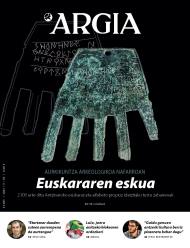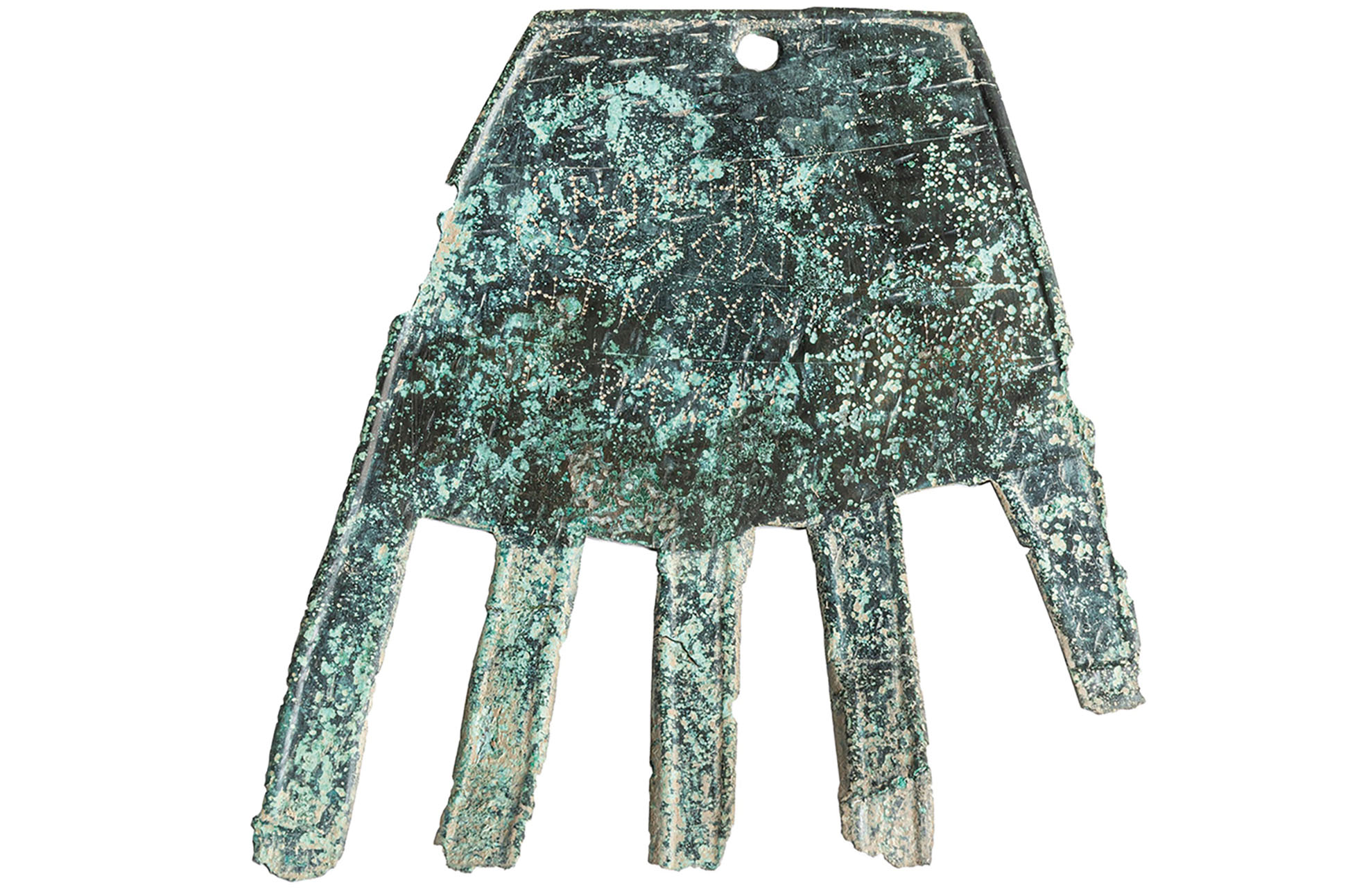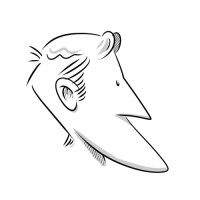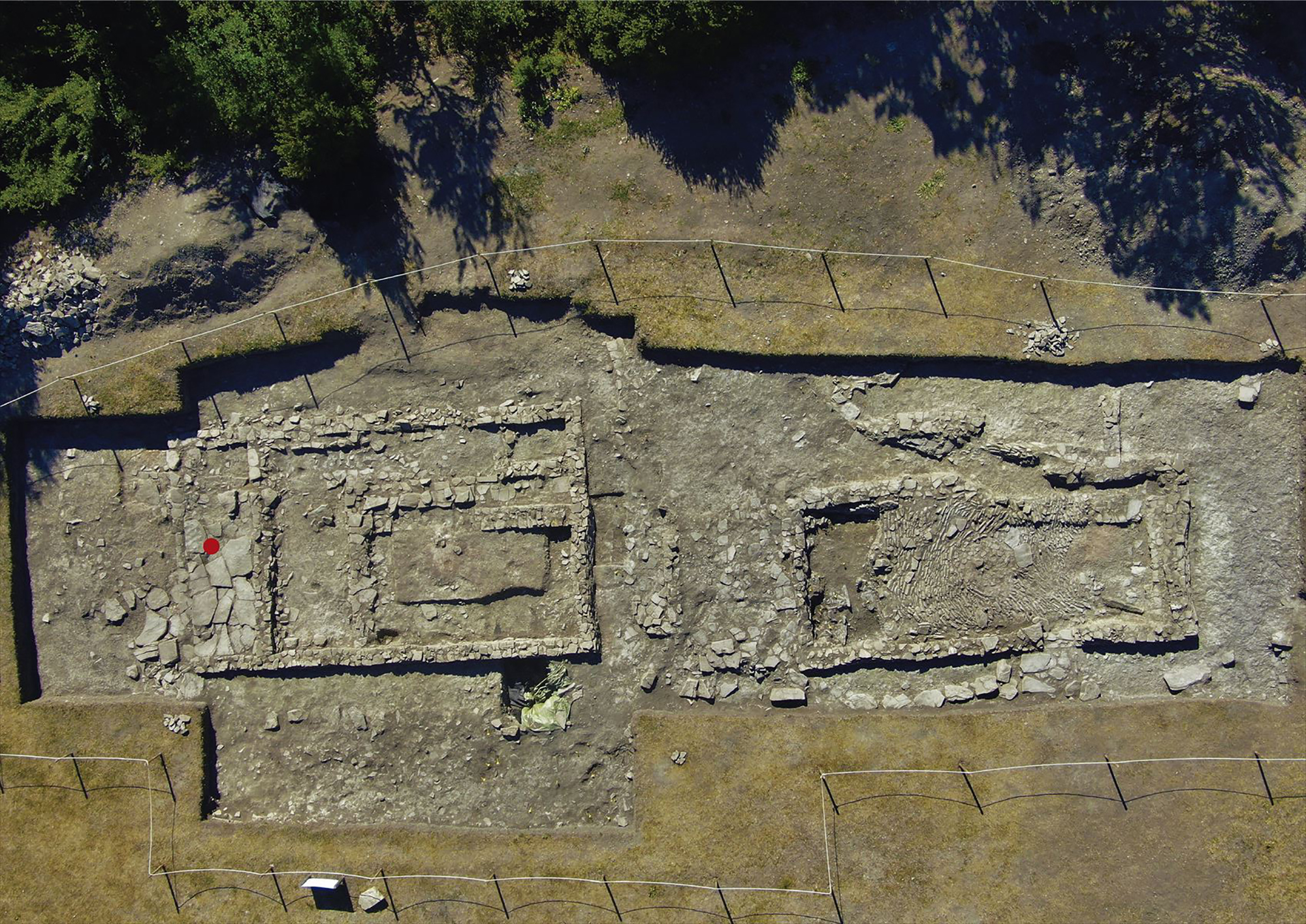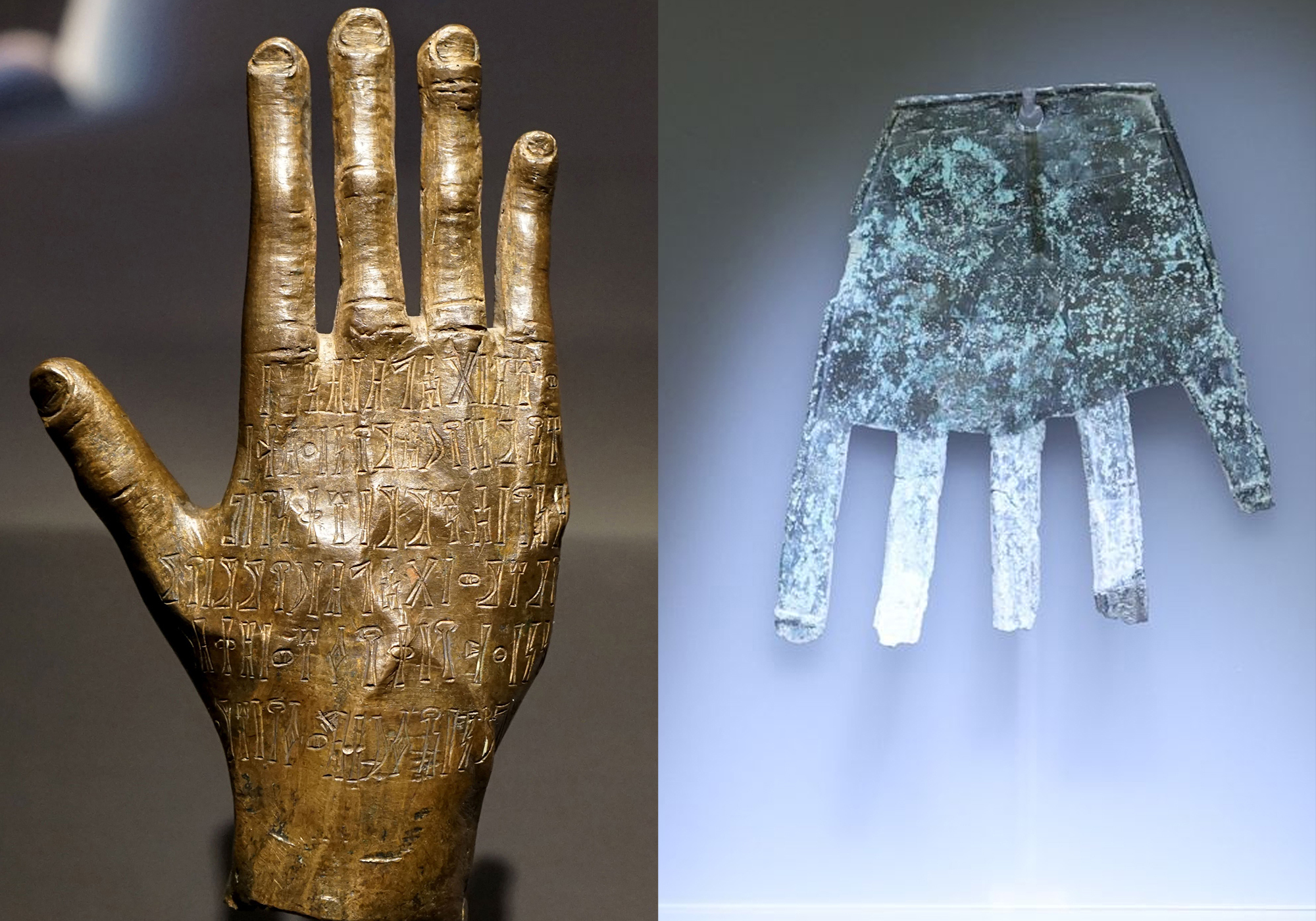Euskera written in bronze
- The archaeological project of Irulegi (Aranguren, Navarra) has taken several years thanks to the collaboration of the Society of Sciences Aranzadi and public institutions. The last surprise that the site gave was recently presented at the hearing of the Government of Navarra, consisting of a bronze sheet in the form of a hand and the inscription of the possible oldest Basque text of the 1st century BC. It's a treasure trove that shows that the Vascones wrote 2,100 years ago, in a variant adapted to our language.
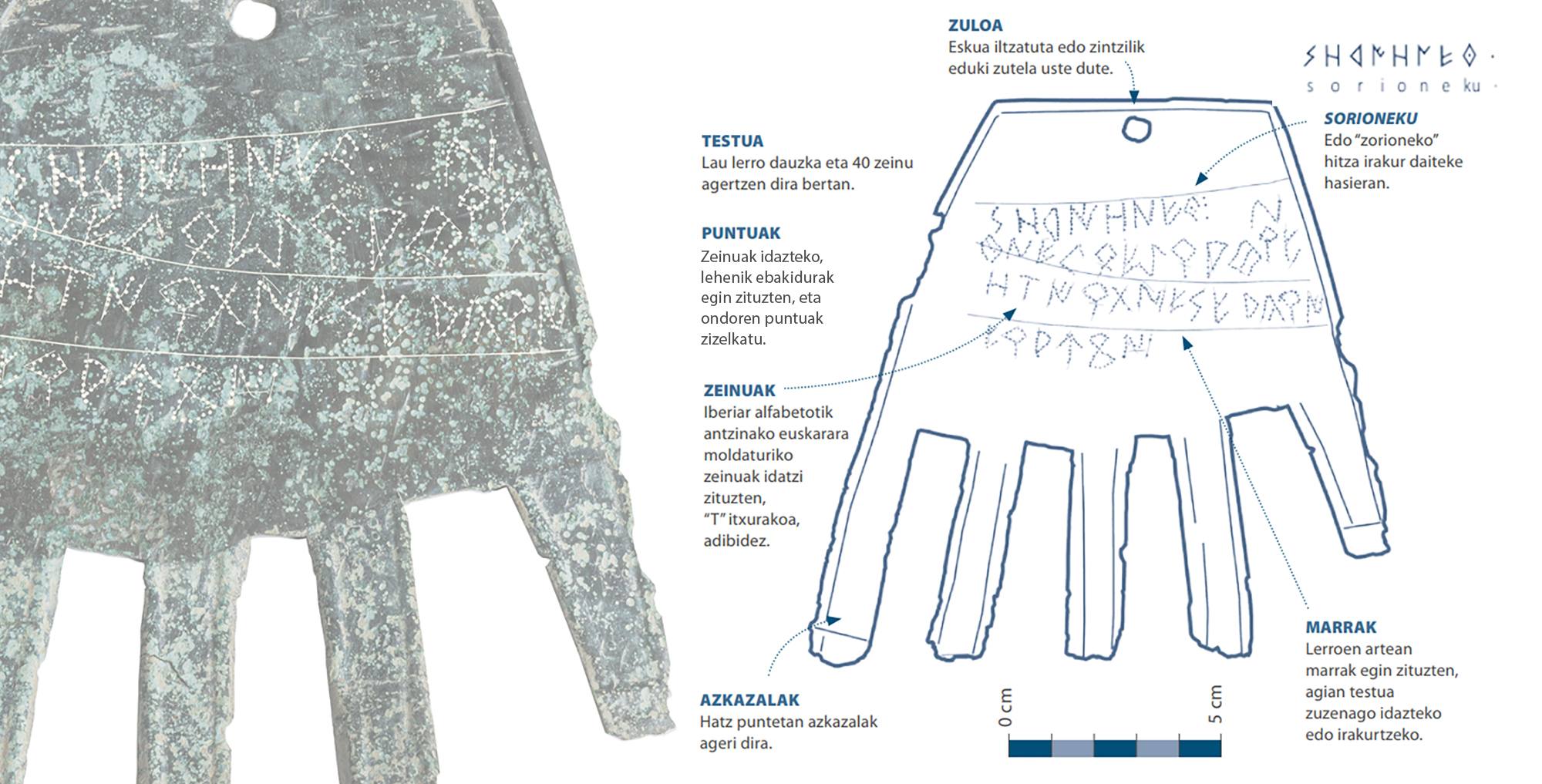
The site is located a few kilometers from Pamplona, near the town of Laquidain. It covers approximately 14 hectares and has been under investigation since 2007. Initially, archaeologists studied the medieval castle at the top of Mount Irulegi, but from 2018 they began digging a fortified village located on the slopes of the surrounding area.
Mattin Aiestaran is currently the director of the work (see your interview here). According to him, the village was born in the Bronze Age (BC). The oldest remains date back to the 15th century), but it experienced its rise at the end of the Iron Age, a. C. Beginning in the third century. It was one of the largest fortified towns known in the western Pyrenees, with an almost urban character. At the same time, Greek and Roman classical authors wrote that the inhabitants of this region were Basques.
.jpg)
A.C. In the first century, on the contrary, the site was partially destroyed by the attacks of the Pompeii armies in the context of the Sertorium war. This war must be understood in the context of a wider conflict that took place in the territories of Rome, within the framework of political articulation between capital and dependent peoples. Although it is not possible to say on which side the Basques slipped, it is clear that these wars have fully affected the territory. In fact, after this attack, the people of Irulegi were completely abandoned, while the Roman nucleus of Pamplona (Pompelo) was strengthened a few kilometres away.
“Seeing that it could be an important piece, we first refer it and then dig it carefully so as not to damage the surface” (Leire Malkorra,
a member of the excavation team)
Hand to attract good luck
This last stage corresponds precisely to the discovery they now present. The piece appears on the portico of a rectangular building in a layer of ash soil. Therefore, researchers have considered it as an element of the existing building at the time of the destruction of the people. At the same level other materials have appeared, such as coins, ceramics, bones, etc. Radiocarbon datations confirm a.C. This timeline of the first quarter of the first century.
This building was excavated in 2021. Leire Malkorra was the first member of the work team who saw the bronze sheet among the sediments, and soon attended him. “Seeing that it could be an important piece, we first refer it and then dig it carefully so as not to damage the surface.” The whole process was documented by both photographs and video. He was later transferred to the archaeological warehouse of the Government of Navarra for restoration and conservation.
The object has the schematic look of a right hand, with marks like fingertips nails. It has the marks back and forth. It has a length of 14.31 cm and a width of 12.79 cm and is fully built in bronze. It has a small hole in the area where the wrist would be. Researchers think he would be nailed or hung at the door of the house or another symbolic place, with his fingers facing down.
.jpg)
These kinds of objects are very rare in the archaeological record. Some elements of the Ebro valley associated with the Iberian world can be mentioned. Thus, in the locality of Alcovered re, in Huesca, there is a site called Puy de Alcalá, in which there is also a sheet in the form of hand, lead, with a hole to hang. Two other examples are reliefs collected in stone steles, collected in the Aragonese deposits of La Vispesa (Tamarite de Litera, Huesca) and El Palao (Alcañiz, Teruel). Although the original site of these elements is known, all objects have appeared outside the archaeological context when found in agricultural works. On the contrary, that of Irulegi has been translated and recorded in its archaeological context, which is essential to value the hand.
However, the meaning of these symbols is not entirely clear. According to Aiestaran, classical Greek sources say that among the Iberian people it was common to cut hands to defeated enemies and hang them on portals of towns, temples and houses, but there is no archaeological evidence. On the other hand, the symbolism of the hand is widespread in different territories and times. It is significant, for example, that another bronze hand found in the Zafar Field (Yemen), d.C. II-III. dated centuries. In it there is also an inscription, written in sabaical language, which says that it is an offer to a god to give good luck. Therefore, researchers believe that it cannot be ruled out that Irulegi's hand has a similar amulet function.

The longest testimony of the Basque Age
But without a doubt, the inscription on the convex hand is the most interesting feature of the piece. According to the philologists Joakin Gorrotxategi and Javier Velaza, it is written in a variant of the Iberian alphabet. The Iberian system combines syllables and phonemes and a. C. It extends between the 5th and 1st centuries to the northeastern peninsular, both in the Ebro Valley and in the Pyrenees. Another important example written in one of these systems is the mosaic discovered in the Roman city of Andelos in Navarra itself.
Regarding language, both researchers have no doubt: The text that appears in the inscription of Irulegi is the Old Vascon or Vascuence, a language that was used before the Romanization, related to the former Aquitaine and precursor of the current Basque. And that's very important, because direct testimonies in that language are scarce. Although in Aquitaine, Navarra, Álava and Soria there are several steles with scattered inscriptions, in most cases they are names of people and gods that appear in Latin phrases. In the inscription of Irulegi, on the contrary, there are 40 signs divided into four rows, so it is the longest testimony in Basque Vascophyll or Old to date.
The transcription of the text would be:
.jpg)
Although the meaning is not yet clear, researchers have some hypotheses. The first word is the one that is best understood: sorioneku, is equivalent to the fortunate word of the current Basque. They explain that both random and good are old words within the Basque lexicon. They are elements that appear in some names of the people and gods of the headings of the Roman era of Aquitaine, and the conjunction of both are also collected by the oldest texts of the Basque corpus, both Lazarraga in Álava and Etxepare in Baja Navarra. Therefore, there is no doubt about the meaning of this word and, furthermore, it would reinforce the hypothesis of conceiving the object as an amulet of good luck.
The discovery is one of the oldest testimonies of the Basque Country or Vascon of Antiquity, in a text longer than usual. It also shows that writing between the Vascones was more widespread than expected: The inhabitants of Irulegi used a variant of the Iberian alphabet adapted to the linguistic characteristics of the Vascon
However, interpreting other words is more difficult. “It is true that this could be the precursor of non-denial in Euskera, and that this last eodaukon is shaped verbally, but more research is needed in order to give a complete interpretation of the text,” said the researchers.
However, the difficulty in understanding the text has not surprised the researchers, since the Vascón of the time moves away from the current Basque with an evolution of two thousand years. The Latin-Spanish relationship would be, or more distant, between Basque and Basque today. According to Velaza and Gorrotxategi, the fact that the opposite happens, that is, that the whole text is perfectly understood, would cause surprise and doubt.
.jpg)
In any case, Aiestaran stresses that the importance of discovery is “of the first order”. On the one hand, it shows that writing between the Vascones was more frequent than had been considered so far, even before the Romanization. In fact, in addition to the text being written in Basque or Old Basque, the Iberian alphabet is adapted to the phonetics of that language, as there are signs that do not appear in the three thousand Iberian writings that have appeared so far. For example, the upper case sign “T” appears only in the writings of the two Basque country coins, oTikes and uTanbaate, but also in the hand of Irulegi.
"This discovery is a landmark in the history of our society, as was the discovery of the paintings of Ekain" (Juantxo Agirre, Secretary General of Aranzadi)
On the other hand, the world of the Basques at the end of the Iron Age, in addition to Aquitaine, suggests relations with the Iberian peoples of the Ebro Valley, always taking into account both the use of the Iberian alphabet and the dissemination of the symbolism of the hand. Therefore, it is clear that this piece will be a fundamental milestone when undertaking further research on the Vascon.
Juantxo Agirre Mauleon, Secretary General of the Aranzadi Society of Sciences, has also expressed satisfaction with the work done. He explains that this institution is preparing a monographic publication on the piece detailing the details of the inscription and the general context of the site and the trajectory of the research team working there. “This discovery is a milestone in the history of our association, as it once was the discovery of Ekain’s paintings, and we are convinced that in the future it will open new avenues of research. For this reason, it is very important for us to publicly disseminate the work we have done,” he stressed.
On August 1, a dozen people from the family were in Aranguren. Two young people from Aranzadi made firsthand the excavations and works being carried out in Irulegi. This visit is highly recommended, as it reflects the dimension of the work they are doing.
Halfway, at the first... [+]
You might see it in mountains or rural areas, looking for underground footprints with metal detectors. They're detectors or pitchers, they bond to play for treasure. Detectorism has become fashionable and there are youtubers and television series talking about them. This activity... [+]
I believe that in recent years two well-differentiated stories are being constructed about our history, our culture, our language, etc. On the one hand, what we could call "official line" and on the other, a line based on recent research and archaeological findings.
The discovery... [+]
The hand of Irulegi, over 2,000 years old, is being an unprecedented incentive in the national conscience of the Basque Country. Its impact, so that the Basques feel so strong and emotionally challenged, invites us to think about what really lies behind this discovery.
This is... [+]









